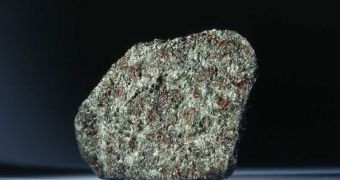The model of planet formation in our solar system is currently very simple and easy to understand. All planets formed from the same materials inside the matter disk spinning around the Sun, thus spawning four most inner rocky planets and four gas giants. The raw material for the four inner planets is believed to have been mostly similar to that found inside chondrite meteorites and asteroids orbiting within the asteroid belt between Mars and Jupiter.
And here is the problem. Although the model is assumed to be correct, the makeup of Mercury, Venus, Earth, Moon and Mars does not match that of the chondrite meteorites. Instead, the chemical makeup of these five cosmic bodies are matched between each other. Guillaume Caro from the Centre de Recherches Petrographiques et Geochimiques believes that the whole model of solar system formation must be revised, as it does not accurately predict what was the raw material for the inner planets.
Alex Halliday from Oxford University and co-author of the study says that: "What our results suggest is that the sorting of the elements that make up these planets may have happened at a much earlier stage than had been believed." Halliday continues: "The composition of these worlds is inconsistent with them simply forming out of large 'lumps' of stony meteorites like those we see today in the asteroid belt."
The asteroid belt is mostly formed of chondrite meteorites, and is probably one of the oldest structures in the solar system, containing meteorites up to 4.5 billion years old. Halliday believes that the biggest mistake made while constructing the model of the solar system formation was that scientists evaluated chondrites to have been the raw material of the whole solar system, because their composition is close to that of the Sun.
For example, chondrite meteorites are abundant in neodymium 142 isotope, which is produced through samarium radioactive decay. However, Earth's crust contains way too much neodymium 142; where did the extra amount came from? The same is available for all rocky planets and our Moon.
Those who argue that the model is correct blame the history of the planet which led to a segregation between different chemical substances. In fact, this process is still taking place even today through plate tectonics movements and heat convection, changing the chemical elements ratio beyond recognition. While some elements are sunk deep into the inner regions of the planet's core, neodymium 142 would have been brought to the surface, thus appearing in a greater concentration than expected.
Alternatively, the same difference would have been observed if the process had been driven by erosion or if the inner bodies had formed long before those in the outer solar system.
Mars for example, could have had in the early life a thick atmosphere that could have sustained a molten magma ocean for up to 110 million years, when some of the 'missing' isotopes might have been deposited deep under the surface. The same may be available for Earth as well. In fact there is clear evidence pointing towards such a solution.
Richard Carlson from the Carnegie Institution reveals that ancient rocks in Greenland are much different from those in other locations on the surface of Earth. On the other hand, Carlson recognizes that the study involving Mars is not conclusive, especially while dealing with rock samples which were blasted from Mars and landed on the surface of the Earth in the form of meteorites.

 14 DAY TRIAL //
14 DAY TRIAL //